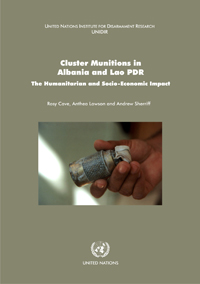Cluster munitions have been used in combat in at least 21 countries. Thirty-four countries are known to produce them and at least 73 countries stockpile them. Worldwide, stockpiled submunitions number in the billions.
The use of cluster munitions results in civilian death and suffering both during and after conflict. They are a particularly dangerous weapon type in need of international attention, in that they have a serious and long-lasting humanitarian and socio-economic impact where they have been used.
Presented here are brief case studies on cluster submunition contamination in Albania and the Lao People's Democratic Republic. Together, these studies present a picture of the short- and long-term humanitarian and socio-economic impact of cluster munition use. The case of Lao PDR shows the continual harm even more than thirty years after the fact caused by large-scale cluster munition use, while the case of Albania illustrates that even recent, limited cluster munition use can cause harm no less profound.
These case studies demonstrate the devastating impact cluster munitions have on civilians. They provide additional evidence from the field that stronger action needs to be taken to reduce the tragedy these munitions bring to lives, livelihoods and societies.
Citation: Rosy Cave, Anthea Lawson & Andrew Sherriff (2006). "Cluster Munitions in Albania and Lao PDR: The Humanitarian and Socio-Economic Impact", UNIDIR, Geneva.
